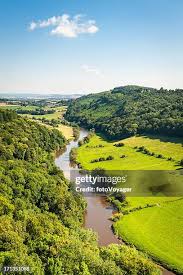The River Wye: A Jewel of Natural Beauty in England

Introduction
The River Wye, one of England’s most picturesque waterways, flows through the stunning backdrop of the Wye Valley and offers not only remarkable natural beauty but also a significant habitat for wildlife and a rich cultural heritage. Stretching approximately 134 miles, the River Wye is known for its breathtaking landscapes, recreational opportunities, and historical significance, making it a vital resource for both locals and visitors alike.
Importance of the River Wye
As the fifth longest river in the UK, the River Wye flows from its source at the Welsh mountains near Plynlimon to the Severn Estuary. Its course weaves through Wales and England, attracting tourists for activities such as kayaking, fishing, and walking along the numerous trails that run alongside its banks. The river is part of the Wye Valley Area of Outstanding Natural Beauty, designated for its exceptional natural and cultural features.
Recent data highlights the river’s ecological importance. The Wye supports a diverse range of species, including salmon and otters, and its banks are dotted with ancient woodlands and limestone cliffs. This biodiversity has caught the attention of environmental groups working to preserve the river’s health amid increasing concerns over pollution and habitat loss.
Recent Developments
In 2023, the River Wye has been the focus of conservation efforts following alarming reports of declining water quality. Investigations have indicated that agricultural runoff and pollution from industry are contributing to adverse ecological impacts. Local authorities and environmental organisations have collaborated on initiatives to monitor water quality and promote sustainable farming practices in the surrounding areas.
In a positive turn of events, community involvement has surged, with several volunteer groups engaging in river clean-up projects and tree planting activities along the banks. These initiatives not only aim to improve the river’s health but also to foster a sense of community responsibility and enhance local biodiversity.
Conclusion
The River Wye continues to be an iconic symbol of natural beauty and ecological significance in England. As conservation efforts intensify, it is vital for local communities, stakeholders, and visitors to actively participate in preserving this invaluable resource. The ongoing commitment to improve water quality and promote sustainable practices is essential for safeguarding the river’s future. With its scenic views and rich biodiversity, the River Wye remains a cherished destination for nature lovers and a vital part of England’s natural heritage.
